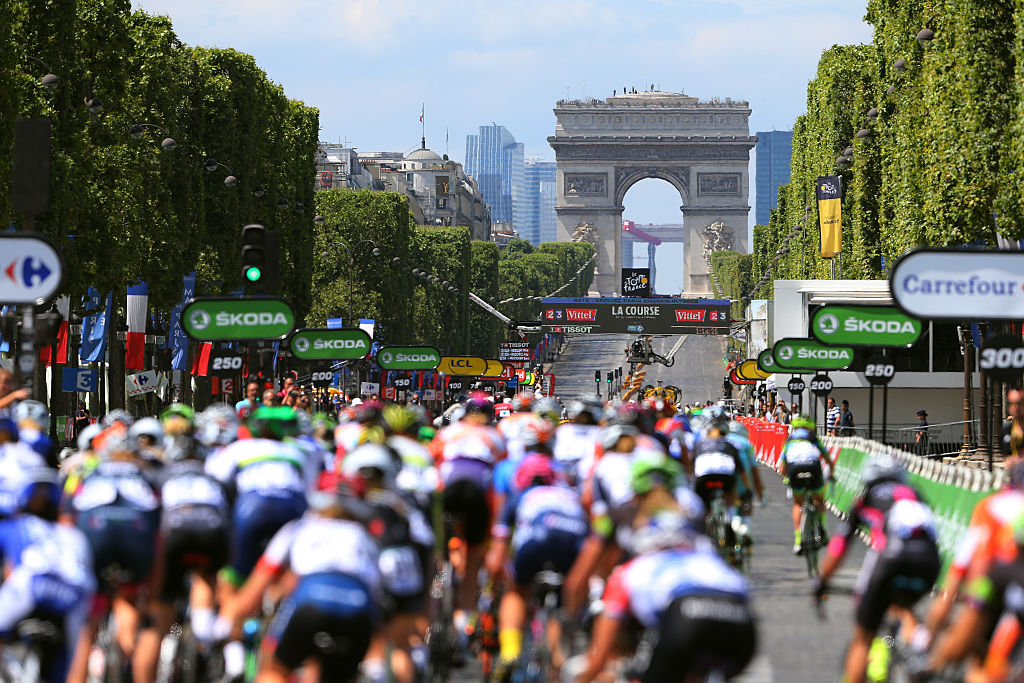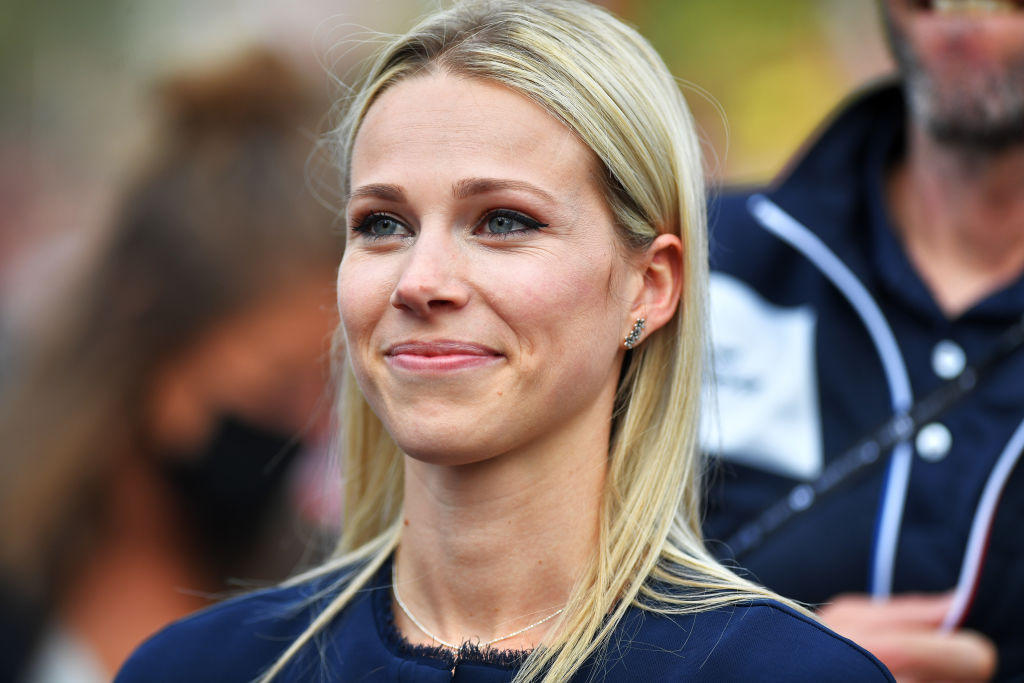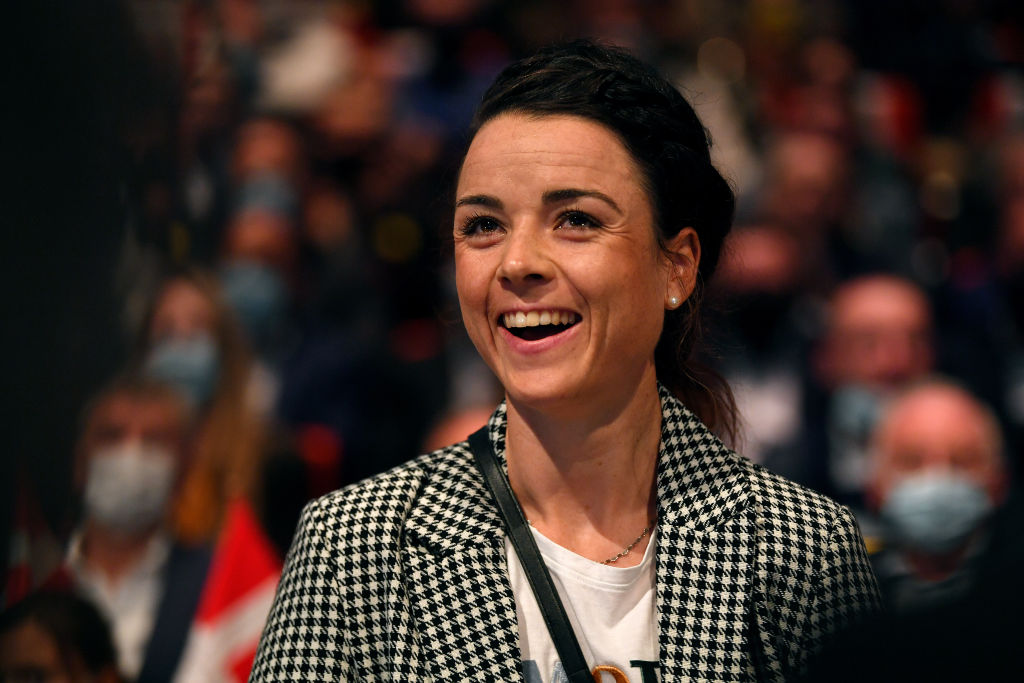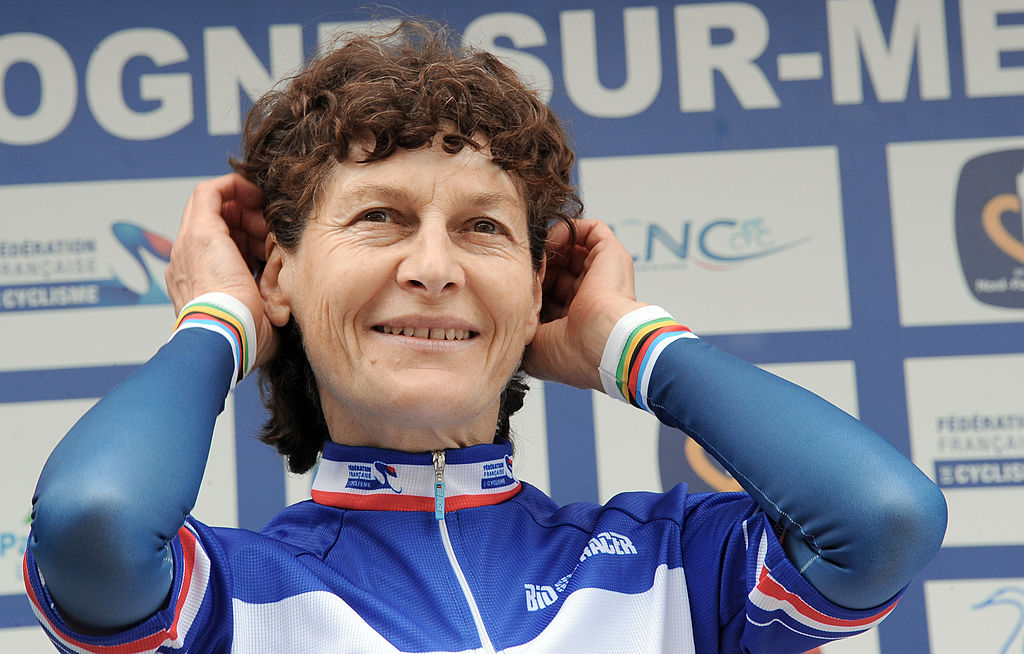Tour de France Femmes: A jewel that we must cherish, says Marion Rousse
'We are in this to create something perennial that will still be going in 100 year’s time' says Christian Prudhomme

History was made when organisers of the Tour de France, Amaury Sports Organisation (ASO) revealed the route of the reborn women’s Tour de France, officially known as the Tour de France Femmes avec Zwift.
Reaction from the capacity audience in the Palais des Congrès, Paris, was positive, when racers applauded enthusiastically as Race Directors Christian Prudhomme and Marion Rousse described the stages.
Despite the women's route not including a time trial, and all the remaining stages being in Eastern France, once it leaves Paris, the feedback was that race is balanced and in line with what the women's peloton would expect.
For Tour de France director, Christian Prudhomme, the Tour de France Femmes is about creating a race that will have longevity and can continue to create history even 100 years from now. Key in this is attracting media attention, through leveraging the public interest in the men's Tour de France.
This was the thinking behind the race beginning with a stage through Central Paris and finishing on the Champs Elysées, immediately after the grand finale of the men’s Tour de France.
Prudhomme explained, “It is not just about creating a stage race. Those exist already. It is the mediatisation of the race that makes the difference and giving pleasure to the spectators. So when the Tour de France finishes they can then watch the women race, and there is that link to the men’s competition with a race on the Champs Elysées, and also a finale on the Super Planche des Belles Filles.
“When people watch the men’s race finish at the summit of the Super Planche des Belles Filles, they can say to themselves ‘We can look forward to seeing more exciting racing again in three week’s time when the women race here’. We chose to focus on the Vosges in the first edition because the Ballon d’Alsace was the first official climb in the Tour de France, in 1905 and so we wanted to make that historical link in this first Tour de France Femmes avec Zwift. We are in this to create something perennial that will still be going in 100 year’s time.”
Get The Leadout Newsletter
The latest race content, interviews, features, reviews and expert buying guides, direct to your inbox!
A women's Tour de France took place from 1984-1989, with stages held on selected days during the men's Tour de France and the women raced approximately the last 80km of the men's stage on those days. Although there was local public interest, notably in the rivalry between the big stars of the day, Jeannie Longo and Maria Canins, the race was not financially viable, and only lasted six editions.
Other women's stage races around France have also taken place in the past, such as the La Grande Boucle Feminine, or the Route de France, but they had no coverage and were run on shoestring budgets with limited sponsoring.
A symbolic handover

By the time Marion Rousse started racing as a youngster, an ASO-organised women's Tour de France was already filed in the history archives, and racing in this event was just a wild dream. As the newly appointed director of the reborn event, the former French National Champion and consultant for France Television Sport she was keen for the route to be something workable that can be continued and potentially developed in the coming years.
Rousse said, “It's a real honour to be the first Director of the Tour de France Femmes avec Zwift. Since I retired from racing I have seen more teams, more resources and more money in women's cycle racing. This is a jewel that we must cherish.
“We really wanted a Grand Départ from Paris, in which there is a symbolic handover from the men's race to the women's. That’s why it was important to leave from the Eiffel Tower.
“When you have an eight-stage race it's too far to go down to the Pyrenees, so it was important to have a set of stages that would fit well together. While the stages will be 120-130km, rather than the 200km that men do, and will go through the Vosges, they will not miss out on the challenges of the Alps or the Pyrenees as the stages will be really difficult, culminating in a finish on the Super Planche des Belles Filles.”
Pro women welcome eight-day event

Although some campaigners have called for a three-week Tour identical to the men's race, pro riders welcomed the event having eight stages, given that it will fall during a busy time of the women's racing calendar.
Audrey Cordon-Ragot (Trek-Segafredo) explained why an eight-day race is the right duration.
“We will have four Grand Tours next year, which will be new for us, and we only have small teams when it comes to rotating the riders. It's not like the men's teams where they can divide riders between Classics and Grand Tours. In the women's teams, the riders do everything, so we have to manage that carefully.
“A stage of eight days is logical given where women's cycle racing is now, as women's cycle racing is not developed enough for there to be a three-week race. With teams having between 10 and 13 riders, it would be impossible to have a three-week race.
“I think this Tour de France Femmes 2022 is well balanced where each type of racer can make the mark at different points in the race. It was important to have an open race with the potential to have a maximum number of riders be in with a chance of winning a stage.
"Then we have these two massive stages at the end, with the Super Planche des Belles Filles. Having this, with the gravel section at the top makes for an iconic finish. It would have been good to have say, L'Alpe d’Huez, but the Super Planche des Belles Filles is a climb that is also legendary in women's cycle racing. So, I am proud we are finishing with that.”
For other riders like newly crowned World Champion, Elisa Balsamo, they were delighted to have a Tour de France with television coverage and to be part of history. Balsamo, who will join Cordon-Ragot at Trek Segafredo next year saìd:
“I think having a women's Tour de France is amazing and I had positive feelings and a big emotion because after Paris-Roubaix and then next year Tour de France it's wonderful. I really like the stages. The first part is super good for sprinters and Classics riders and so I really like it. It's a dream to win a stage in the Tour de France, and fight for the green jersey. Maybe we can hope for an Italian winner again like there was many years ago.
“I think the Giro and Vuelta are super good stage races for us, and now having the Tour is wonderful.”
A similar sentiment was echoed by Cecilie Uttrup Ludwig (FDJ-Nouvelle-Aquitaine Futuroscope).
“This is what we've been fighting for for a long time, and now we are part of making that history,” said the Dane. “It's going to be huge. Everyone knows the Tour de France; even my grandma knows it. When people say cycling, the ask ‘Do you do the Tour de France?’ And now we can say, yes we do the Tour de France, too. And now I can tell my children or my grandchildren that I was the first woman to be part of this.
“It looks like there will be some hard stages with gravel, and the last stage on the Super Planche des Belles Filles is going to be exciting. When I think of the Tour I think of hard stages and the battle for the yellow jersey so we will have that. This is an exciting day for women's cycling.”
Jeannie Longo: Let's start with 2022 and then we can look to developing it more

Claire Floret, coordinator of the women's amateur racing team Donnons des Elles au Vélo, who have ridden the Tour de France route one day ahead of the men’s peloton since 2015 as part of their campaign for equality in sport, and a women's Tour de France, was optimistic about the event.
Floret said, “I think that the route is correct and in line with what we would expect in a professional women's cycle race, and from a sporting perspective the competition will be comparable to the men's. Stages of around 130km is good as it allows for more exciting racing than a 200km stage, and this would engage the audience more. I don't agree with those who criticise the fact that it's only eight stages because we have to take into account the size and resources of the women's teams and how feasible it is to have riders ready for this race and all the other races before and after the Tour de France Femmes.
“I do think the lack of a time trial is something to look at in the future, as that is an exciting element in a stage race that is missing. Also, the prize money, while more than most other races, still has some way to go compared with the men's race. Yes, we are only racing eight stages but the prize money is only 10 per cent of the men’s budget. Despite this, I still find this event very encouraging.”
French racing legend Jeannie Longo, who competed in the women's Tour de France in the 1980s, and won three editions (1987-89), was positive about ASO's commitment to the reborn women's Tour. The three-time Tour winner said, “Well, the high mountains aren't included - no Pyrenees, Alps, though there are the Vosges. But this is only the start, so we can't really criticise. We can only thank the Tour de France organisation for putting in place something for women's racing. Note that organising a Tour is a massive undertaking. Let's start with 2022 and then we can look to developing it more.”
Just like the men's Tour de France, the Tour de France Femmes will include competitions for yellow, green, polka dot, and white jerseys. In keeping with a feminine theme, these will be produced by Santini, a company led by women and with over 90 per cent of the workforce being women.
CEO Monica Santini said, “We are very excited about the Tour. It's been a long way to get here and we are superexcited. It's like a cherry on the cake to work with ASO after the work we have done over the years with Trek-Segafredo, the UCI, the Giro d'Italia and the Vuelta, and now the Tour. So we can say we have been on the shoulders of the biggest events in cycling.”
Sister and Marketing Director, Paola added, “I feel very proud of what I have seen back home in the factory and the offices. A lot of people have been working towards this for a long time. It's not just an achievement for me, my sister and my dad, but an achievement for the big family of Santini. Everyone from the marketing guys to those stitching the jerseys are really excited.”